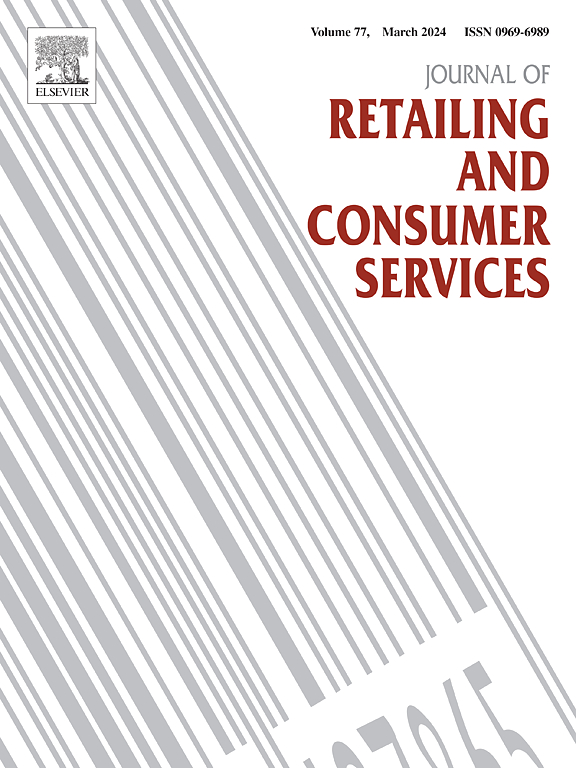网红存在的双重效应下的直播渠道策略
IF 13.1
1区 管理学
Q1 BUSINESS
Journal of Retailing and Consumer Services
Pub Date : 2025-07-28
DOI:10.1016/j.jretconser.2025.104418
引用次数: 0
摘要
直播(LS)已成为品牌所有者的重要销售渠道。本研究评估了三种LS策略:self LS (S模型),品牌通过自己的账户直接销售;影响者LS (I模型),产品通过影响者的账户销售;以及混合LS (C模型),它结合了这两种方法。我们的研究结果表明,策略的选择受到网红粉丝效应的强烈影响。高扇效应有利于I型,其次是C型,低扇效应有利于S型。随着客户观看成本的增加(例如,由于流媒体持续时间的缩短),C模式的销售价格上升,而I模式的销售价格下降。然而,品牌所有者的利润在I和C两种车型上都有所增加。我们还发现,适度的声誉溢出对品牌所有者和影响者都有利,但在I模型中,影响者可能并不总是付出最大的努力。此外,当使用C渠道时,消费者的福利总是最高的,消费者的利益可能并不总是与品牌所有者和影响者的利益一致。在扩展部分,我们考虑了平台流算法和外部竞争,进一步丰富了研究结论。本研究为品牌所有者选择LS策略提供了指导,突出了自直播和网红合作之间的权衡。本文章由计算机程序翻译,如有差异,请以英文原文为准。
Live streaming channel strategies in the presence of the dual effect of influencers
Live streaming (LS) has become a vital sales channel for brand owners. This study evaluates three LS strategies: self LS (S model), where the brand sells directly through its own account; influencer LS (I model), where products are sold via an influencer's account; and hybrid LS (C model), which combines both approaches. Our findings reveal that the choice of strategy is strongly influenced by the influencer's fan effect. A high fan effect favors the I model, followed by the C model, while a low fan effect favors the S model. As customer viewing costs increase (e.g., due to shorter streaming durations), sales prices rise in the C model but drop in the I model. However, the brand owner's profit increases in both I and C models. We also find that moderate reputation spillover benefits both the brand owner and the influencer, but the influencer may not always deliver maximum effort in the I model. Additionally, consumer welfare is always highest when the C channel is used, and consumer interests may not always align with those of the brand owner and influencer. In the extensions, we consider platform streaming algorithms and external competition, further enriching the research conclusions. This study offers guidance to brand owners in selecting LS strategies, highlighting the trade-offs between self-live streaming and influencer collaboration.
求助全文
通过发布文献求助,成功后即可免费获取论文全文。
去求助
来源期刊
CiteScore
20.40
自引率
14.40%
发文量
340
审稿时长
20 days
期刊介绍:
The Journal of Retailing and Consumer Services is a prominent publication that serves as a platform for international and interdisciplinary research and discussions in the constantly evolving fields of retailing and services studies. With a specific emphasis on consumer behavior and policy and managerial decisions, the journal aims to foster contributions from academics encompassing diverse disciplines. The primary areas covered by the journal are:
Retailing and the sale of goods
The provision of consumer services, including transportation, tourism, and leisure.

 求助内容:
求助内容: 应助结果提醒方式:
应助结果提醒方式:


